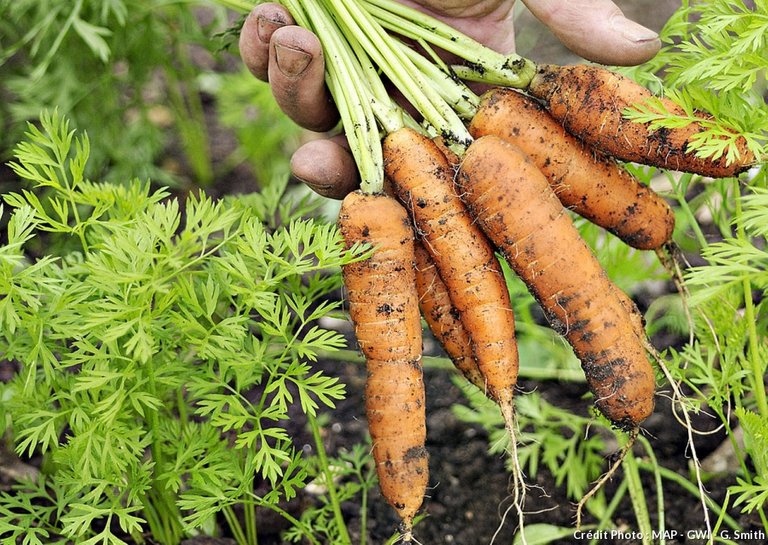Hellp steaamian welcome to my today post on @farms daily theme, titled: carrots.Carrots is one of the most consumed vegetable in the world it has lots of vitamins, and they are nutritious and taste really good, too. They can be nibbled and munched upon whenever the urge arises.
Varieties:
There is a variety of carrot for everyone and different varieties carrot are categorized by length.
Short varieties come as small as two inches, and are as wide as they are long. These are the carrot of choice for gardeners who have hard clay or rocky soils.
The longer varieties do best in rich, well worked soil rich in compost. Home gardeners usually cultivate the long fat carrots.
Also carrots comes in other varieties, such as yellow and a red variety for those looking for a different type to try, baby carrots are a shorter type of carrot.
.jpeg)
image source
Tips for Growing Carrots:
Work the soil deeply. Remove all rocks and stones.
A loose soil is very important. Add plenty of compost.
Do not add too much nitrogen fertilizer. It results in "hairy" roots.
Water deeply.
Thinning seedlings is a must. Follow the spacing on the seed packet
Planting Carrot Seeds:
Cultivating of carrot seeds should be done by working the soil deeply. Add liberal amounts of compost. If compost is not available, add peat moss. Land Preparation for carrots farming, it is important to remove any rocks on the land, stones and debris which may impede the downward formation of the roots. Forked roots will result when a root hits an object.
Carrot seeds are among the smallest, finest of garden seeds. They are very difficult to space. Sow seeds very thinly, about 1/4 inch deep. Cover them with a fine garden soil. Or sprinkle them on top of the soil, and lightly water them into the soil. Ensure to create Space between rows 1 to 1 1/2 feet apart. Usually we recommend double rows, spaced 1 1/2 feet apart, and then wider rows, to afford easy access for home gardens.
Carrot seeds sowing can also be broadcasted, is also popular with carrots, broadcast may incudes; sowing, sprinkle or spread the seeds across the area you are planting.
Note: it is important to thin the seedlings before crowding impairs their growth. At germination stage, ensure to thin to two (2) inches apart as soon as possible.
Tip: For a continuous harvest, sow some seeds every two to three weeks.
Harvesting:
Harvest the carrots as "baby" size, thinning the row as you harvest. Once you begin picking, you can harvest as needed. When the plants turn dry or dies off, the carrots do not need to be harvested right away. They can remain in the soil for weeks or more.
In the "old days" before refrigeration, carrots were kept in the soil, and covered with a thick layer of leaves. Then, they were dug up as needed, for consumption. Carrots kept in the ground will last well into the winter months.
Note: Keeping carrots in the ground for long periods can affect flavor.
.jpeg)

Hi! I am a robot. I just upvoted you! I found similar content that readers might be interested in:
http://gardenersnet.com/vegetable/carrot.htm